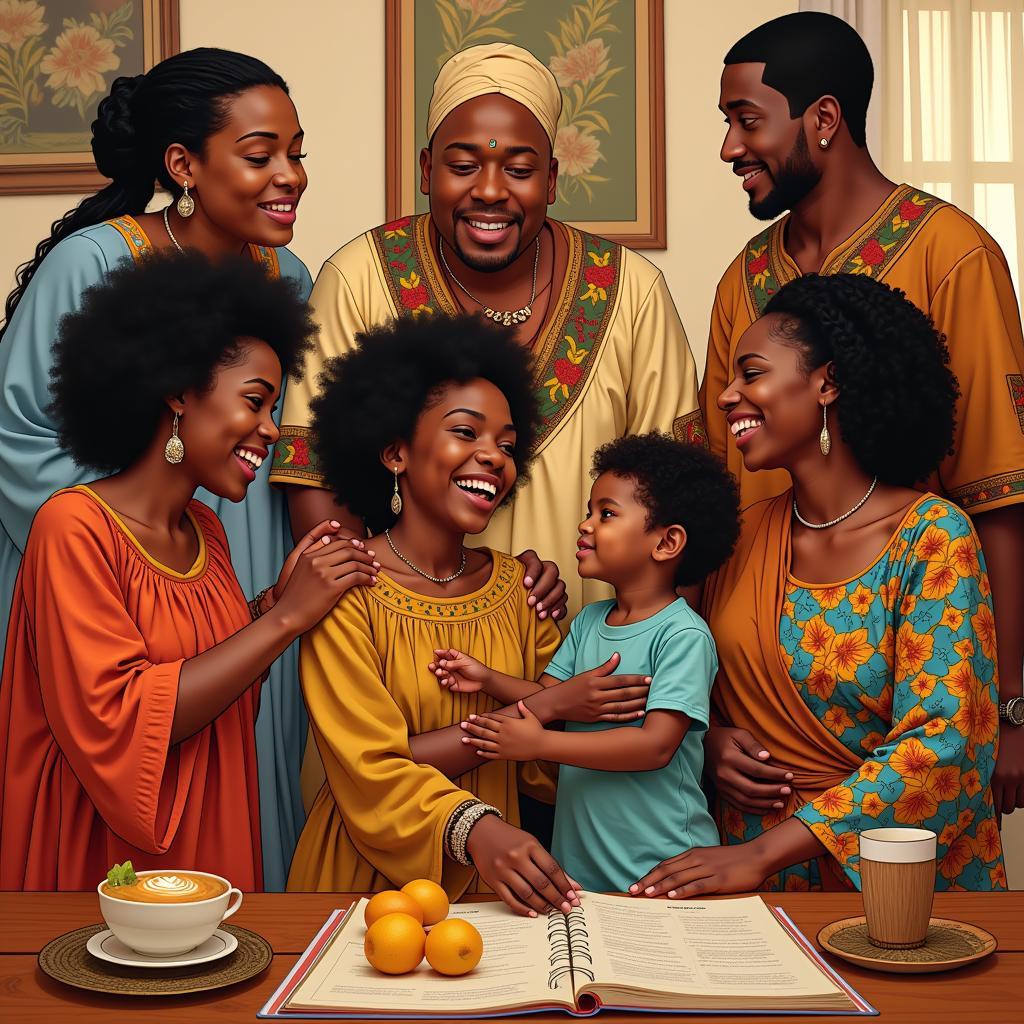African Attire for Boys: A Celebration of Culture and Style
African Attire For Boys is a vibrant tapestry of tradition, creativity, and style. From the bold prints of West Africa to the flowing robes of East Africa, each region boasts a unique and captivating fashion heritage. This article delves into the diverse world of African clothing for boys, exploring the history, significance, and contemporary trends shaping this vibrant aspect of African culture.
The Rich History of African Clothing
Clothing in Africa is not just about covering the body; it’s a powerful form of non-verbal communication, reflecting social status, cultural identity, and even spiritual beliefs. For centuries, textiles and garments have played a crucial role in African societies, passed down through generations as cherished heirlooms and symbols of heritage.
Traditional African Attire for Boys
Traditional African clothing for boys varies significantly across the continent’s diverse regions. In West Africa, vibrant, handwoven fabrics like kente cloth, Ankara, and Aso-oke are crafted into shirts, trousers, and the iconic “boubou” robes.
In East Africa, the “kanzu,” a long white or cream-colored robe, is a common sight, often paired with a “kikoy,” a colorful, multi-purpose fabric worn as a wrap or headscarf. Southern Africa is known for its use of animal skins and hides, often incorporated into ceremonial attire, while North Africa features flowing robes and head coverings influenced by Arabic and Berber traditions.
Modern Interpretations of African Attire for Boys
Today, African designers are reimagining traditional styles for boys, incorporating contemporary cuts, fabrics, and embellishments. Trendy jackets, stylish shirts, and comfortable pants draw inspiration from the continent’s rich textile heritage while reflecting global fashion trends.
How to Choose the Perfect African Attire for Boys
Choosing the perfect African attire for boys depends on the occasion, personal style, and cultural preferences. For formal events, consider a well-tailored shirt paired with trousers or a flowing “agbada” robe. Casual occasions call for comfortable pants or shorts crafted from vibrant African print fabrics.
Tips for Styling African Attire for Boys
- Accessorize with Confidence: Complete the look with beaded necklaces, bracelets, or hats, adding a touch of personality and cultural flair.
- Embrace Bold Prints and Colors: Don’t be afraid to experiment with the vibrant prints and colors that define African fashion.
- Consider the Occasion: Choose attire appropriate for the event, respecting cultural norms and expectations.
Conclusion
African attire for boys is a testament to the continent’s rich cultural heritage and evolving fashion landscape. By embracing these vibrant garments, we celebrate Africa’s diversity, creativity, and timeless sense of style. From traditional ensembles to contemporary interpretations, African clothing for boys continues to captivate the world with its bold aesthetic and powerful cultural significance.
